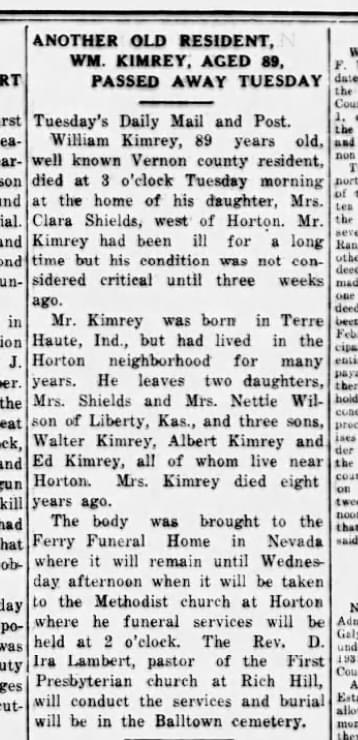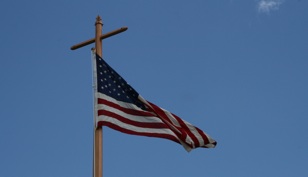

Pvt. William W. Kimrey (August 20, 1847 – October 22, 1935).
Pvt Kimrey served 100 days for the Union with B Co, 133rd Regiment, Indiana Infantry from May 3, 1864 to September 5, 1864, then with B Co, 43rd Indiana Infantry from March 28, 1865 to June 14, 1865.
Regiment History of the 133rd Indiana Infantry: One Hundred Days' Volunteers. -- Indiana's quota of 100 days' troops was eight regiments, numbering consecutively from the 132nd to the 139th, inclusive. They were used largely for guard duty and in garrisoning necessary points, relieving veteran troops for active field work in the important campaigns of 1864. These troops were to perform such duty as might be required of them in any state, and were to be armed, subsisted, clothed, and paid by the United States. Upon reaching Nashville they were assigned to railroad guard duty along the lines of the Nashville & Chattanooga, Tennessee & Alabama, and Memphis & Charleston railroads. They were kept constantly engaged in this work until the latter part of August 1864, serving beyond the time for which they had enlisted, keeping Sherman's lines of communication open for the transportation of supplies to his army. One Hundred and Thirty-third Infantry. -- Col., Robert N. Hudson Lieut.-Col., Charles M. Smith; Maj. Lucien A. Foote. This regiment was organized in May 1864, nine companies being raised in the 7th Congressional district and one at Richmond in the 5th district. It was mustered in May 17, and left the state at once for Tennessee. It was mustered out in Aug. 1864. Its total strength was 941. Loss by death, 16, desertion 2. (Source: The Union Army, vol. 3, p. 186).
Regiment History of the 43rd Indiana Infantry: This regiment was organized at Terre Haute and was mustered in Sept. 27, 1861. Soon afterward it moved to Spottsville, Ky., thence to Calhoun, where it went into camp until late in February 1862. It was transferred to Missouri, attached to Gen. Pope's army, and participated in the siege of New Madrid and Island No. 10. Later it was with Foote's gunboat fleet at Port Pillow for 69 days and was the first Union regiment to land in the city of Memphis. With the 42nd Ind., it formed the garrison there for two weeks until reinforced. In July 1862, it was ordered up the White River, Arkansas, and later to Helena. It accompanied Hovey's expedition to Grenada, Miss., and on its return to Helena took part in the expedition to Yazoo pass. At the battle of Helena it supported a battery, repulsing three attacks and capturing a regiment greater in numbers than its own. It assisted in the capture against Little Rock, and re-enlisted there in January 1864. It moved with the expedition being engaged at Elkin's and Jenkins' Ferries, Camden, and Marks' Mills. At the latter place its brigade engaged in guarding a train of wagons from Camden to Pine Bluff, was attacked by 5,000 of Marmaduke's cavalry, the 43d losing nearly 200 in killed, wounded, and missing. Among the captured were 104 reenlisted veterans. It was furloughed home June 10 and while there it volunteered to go to Frankfort, Ky., which was threatened by Morgan's cavalry. It remained at Frankfort until the enemy left that part of the state, and on the way home it was in a skirmish with guerrillas near Eminence, Ky. At the conclusion of its furlough the regiment was placed on duty at Indianapolis, guarding prisoners at Camp Morton. Of 164 men captured in Arkansas and taken to the enemy's prison at Tyler, Tex., 10 or 12 died, the others returning in March 1865, and joining the regiment at Indianapolis. The regiment was mustered out June 14, 1865. Its original strength was 985; gain by recruits, 1,154; reenlistments, 165; total, 2,304. Loss by death, 206, desertion, 121; unaccounted for, 285. (Source: The Union Army, vol. 3).
